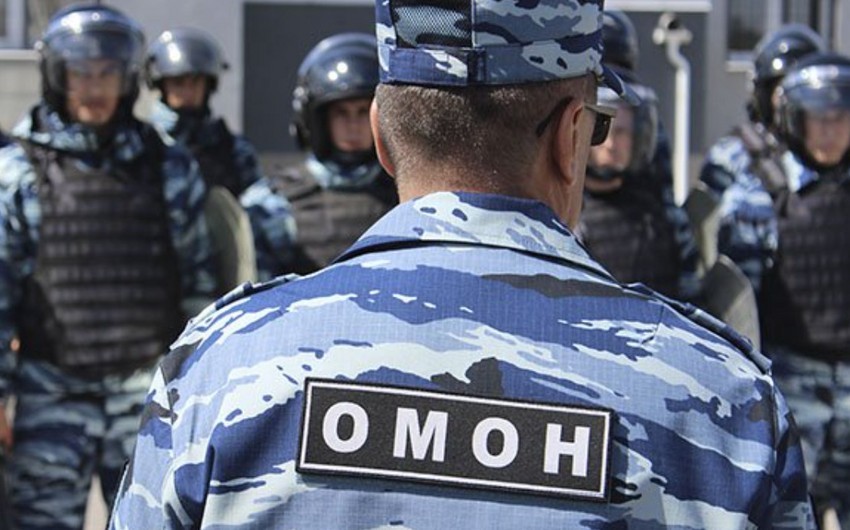Here's What You Need to Remember: With around 1,300 examples in service at the type’s peak, the twin-engine Su-15 in the late 1970s was the most numerous interceptor in Soviet service.
Candid comments by a former Soviet air force interceptor pilot reveal the difficulties the air arm faced in defending Russia’s vast interior from intruding American bombers during the final decades of the Cold War.
Aviation blog Hush Kit interviewed Valeri Shatrov, a former Su-15 pilot with the 302nd Fighter Regiment, a unit of the Soviet Air-Defense Forces in the Soviet Far East. Shatrov joined the 302nd Fighter Regiment in 1976. He ended his flying career in the early 1980s.
With around 1,300 examples in service at the type’s peak, the twin-engine Su-15 in the late 1970s was the most numerous interceptor in Soviet service. Shatrov praised the Su-15’s maneuverability and reliability but acknowledged its limitations.
“If I had to choose three words or terms to describe the Su-15, I would say: reliability, good manoeuvrability and beauty of form,” he told Hush Kit. “High reliability was one of its best traits, I do not remember any tech failures. Su-15 crashes were very rare and were mostly caused by the human factor.”
The Su-15, which served with Soviet units from 1965 to 1993, by modern standards was unsophisticated. “In those times there were no autopilots and navigation systems as we know them today, so we flew without any,” Shatrov explained.
“Navigation was done with the aid of often barely legible pilot’s written notes!” he added. “Very primitive by modern standards. Again, the lack of modern navigation instruments and landing systems required the pilot to maximise his skill in order to land the plane in minimum weather conditions. And it was nothing, it was okay for us. There were times you had to land below minimum weather conditions.”
“The radar sight ‘saw’ a little worse than the radars of our potential enemies,” Shatrov continued. “But the long-range and short-range air to air missiles worked well, at least from my experience from training launches.”
Missile capacity was limited, however. Early Su-15s carried just two R-8 missiles. Later Su-15 models could carry four missiles. The R-8 came in radar- and infrared-guided models and could hit targets as far away as 14 miles.
“The aircraft was manoeuvrable,” Shatrov said. “With the engines set at maximum thrust the Su–15 allowed you to perform a turn with a roll of almost 90 degrees. As for the service ceiling of the aircraft, I personally gained a height of [75,500 feet].”
U.S. Air Force B-52s at the time were the primary threat. During a nuclear war, B-52s taking off from the central United States would have crossed the North Pole to drop nuclear bombs on Soviet cities.
Shatrov seems to believe he and his fellow Su-15 pilots could have shot down B-52s. But Shatrov speculated that the Americans might also have sent F-4 or F-15 fighters to escort the bombers.
Given the distances involved, the U.S. Air Force might have struggled to sustain an escort force all the way to the Soviet interior, but Shatrov worried nonetheless. “While F-4s and Su-15s had the same maneuvering characteristics and armament, the F-15 would have proved a far more challenging battle opponent,” he said. “The F-15 was more maneuverable than our aircraft, and its electronic equipment was much more modern.”
The end of the Cold War, and the tendency of aging veterans to speak openly about their military exploits, has given the Western public unprecedented insight into the operations and capabilities of Soviet warplanes.
While Russia quickly disposed of older fighters during the 1990s and 2000s, former Soviet satellites often retained their own older planes for decades longer. The Polish air force for one has continued to fly early MiG-29 and Su-22 fighters.
Guy Razer, then a lieutenant colonel in the U.S. Air Force, in the early 2000s got the chance to fly in both types during NATO war games. The MiG-29 was "highly maneuverable when needed but seemed to use a lot of fuel to make that happen," Razer recalled. The Su-22 “had some brute force to it” but “the avionics were pretty antiquated."








